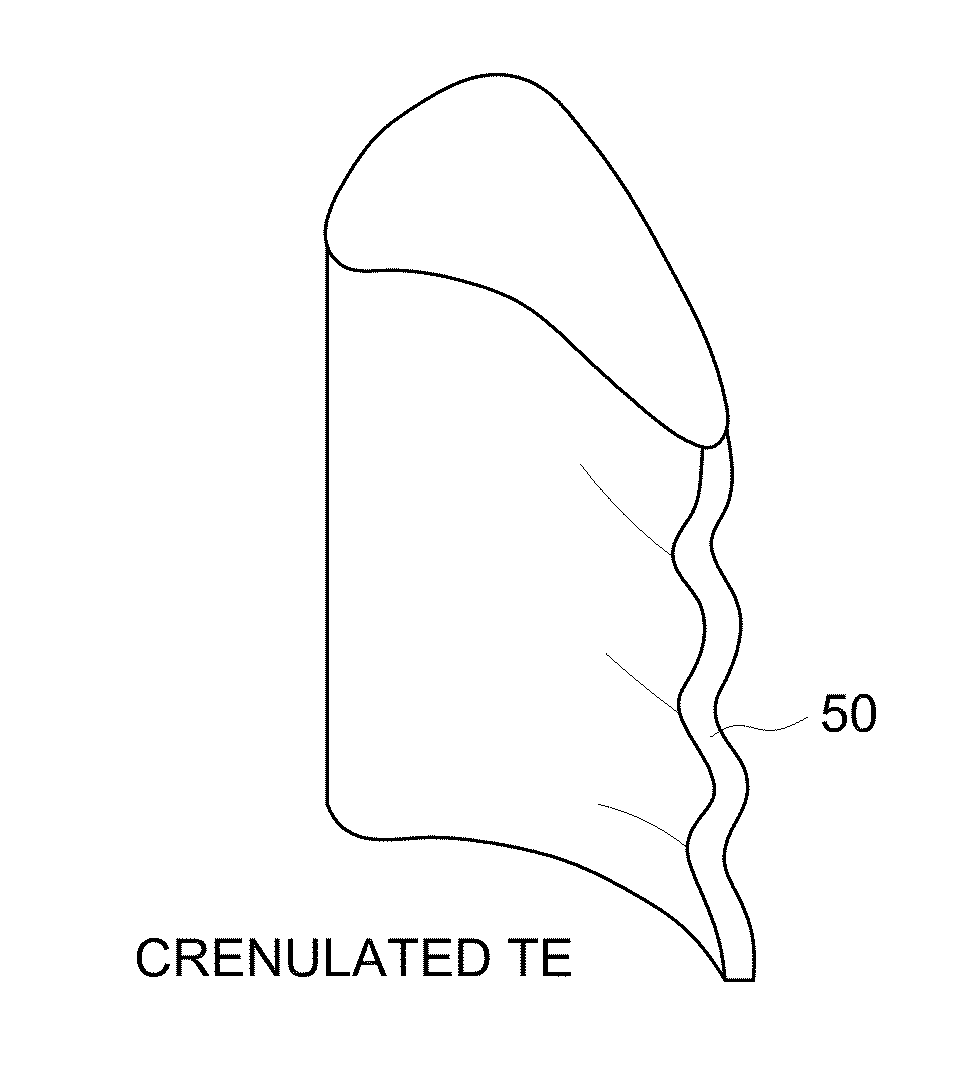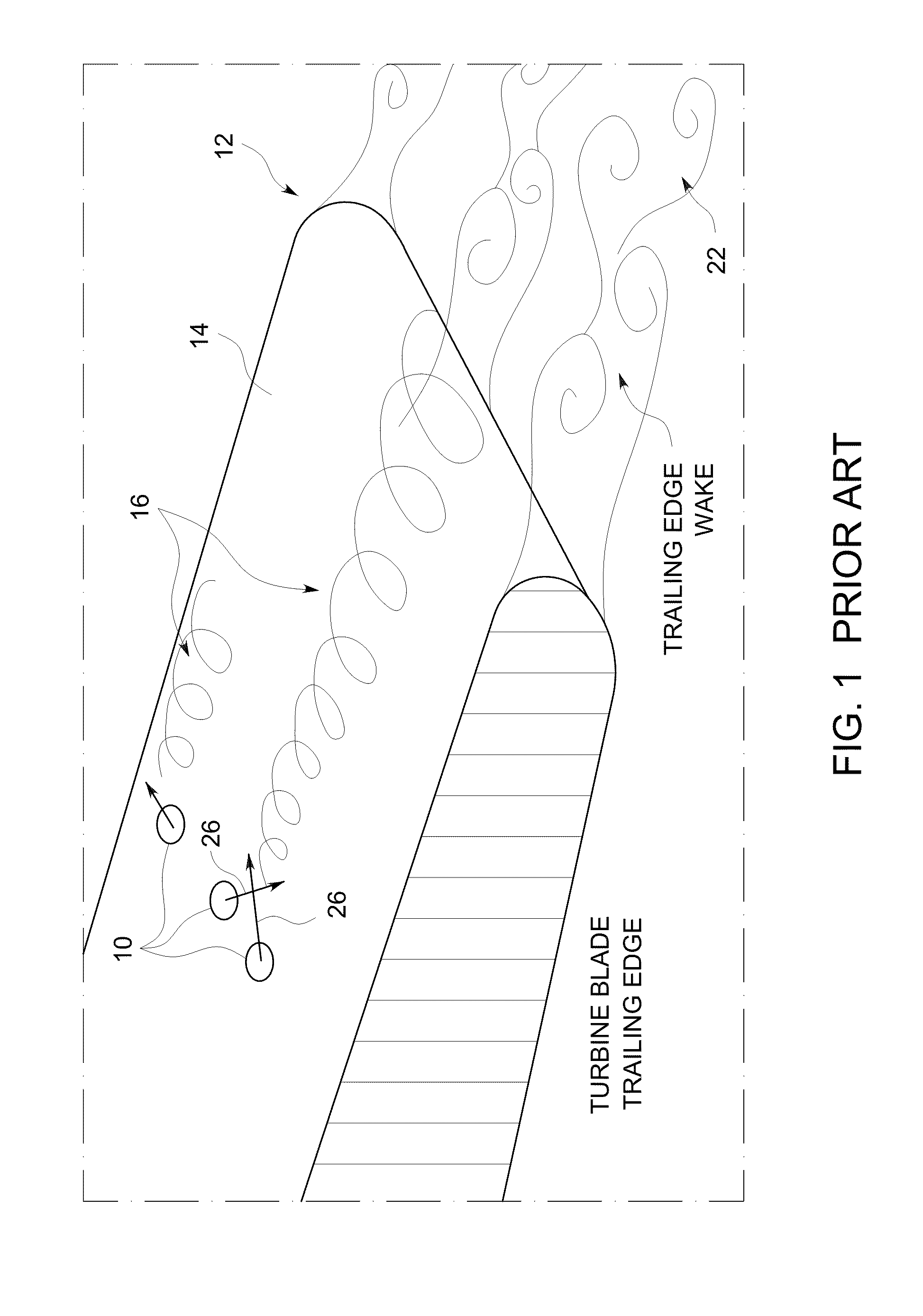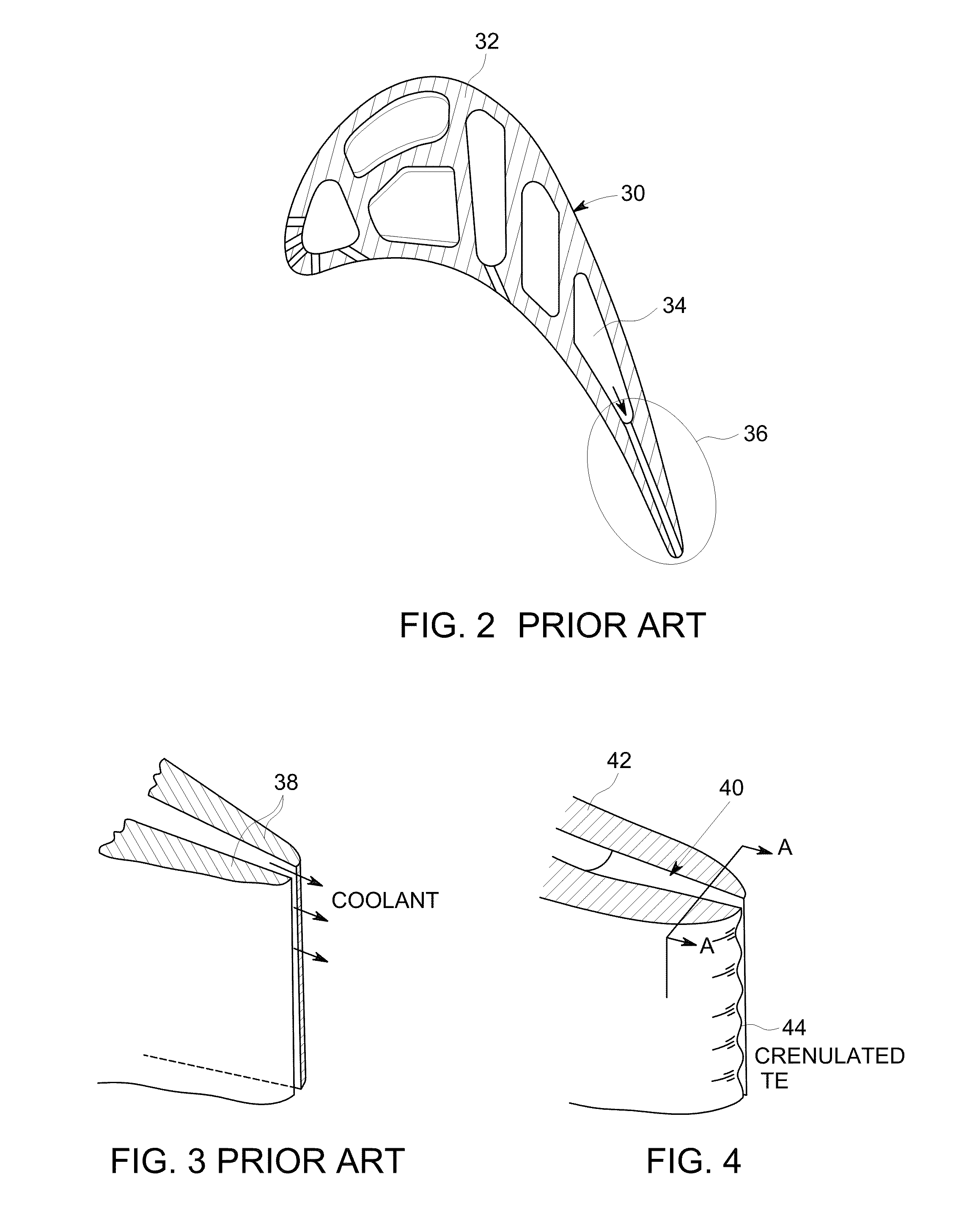System and method for enhanced turbine wake mixing via fluidic-generated vortices
- Summary
- Abstract
- Description
- Claims
- Application Information
AI Technical Summary
Benefits of technology
Problems solved by technology
Method used
Image
Examples
Embodiment Construction
[0037]According to particular embodiments such as those depicted in FIGS. 10-12 and 17-18 described in further detail herein, cooling hole wake mixing elements are disposed in a substantially arcuate thick trailing edge of a high pressure turbine (HPT) blade or vane to provide a trailing edge wake mixing scheme. Unlike conventional trailing edge wake mixing schemes that inject fluid parallel to the main flow path, these embodiments advantageously inject fluid at pitch and / or yaw angles to the main flow path to generate the desired streamwise vortices described in further detail herein.
[0038]According to other embodiments such as those depicted in FIGS. 4-8 and 19-20 described in further detail herein, chevron trailing edges are provided on the pressure side, suction side, or both the pressure side and suction side of a high pressure turbine blade or vane to provide a pressure side bleed slot trailing edge wake mixing scheme.
[0039]According to yet other embodiments, fluid injection e...
PUM
 Login to View More
Login to View More Abstract
Description
Claims
Application Information
 Login to View More
Login to View More - R&D
- Intellectual Property
- Life Sciences
- Materials
- Tech Scout
- Unparalleled Data Quality
- Higher Quality Content
- 60% Fewer Hallucinations
Browse by: Latest US Patents, China's latest patents, Technical Efficacy Thesaurus, Application Domain, Technology Topic, Popular Technical Reports.
© 2025 PatSnap. All rights reserved.Legal|Privacy policy|Modern Slavery Act Transparency Statement|Sitemap|About US| Contact US: help@patsnap.com



